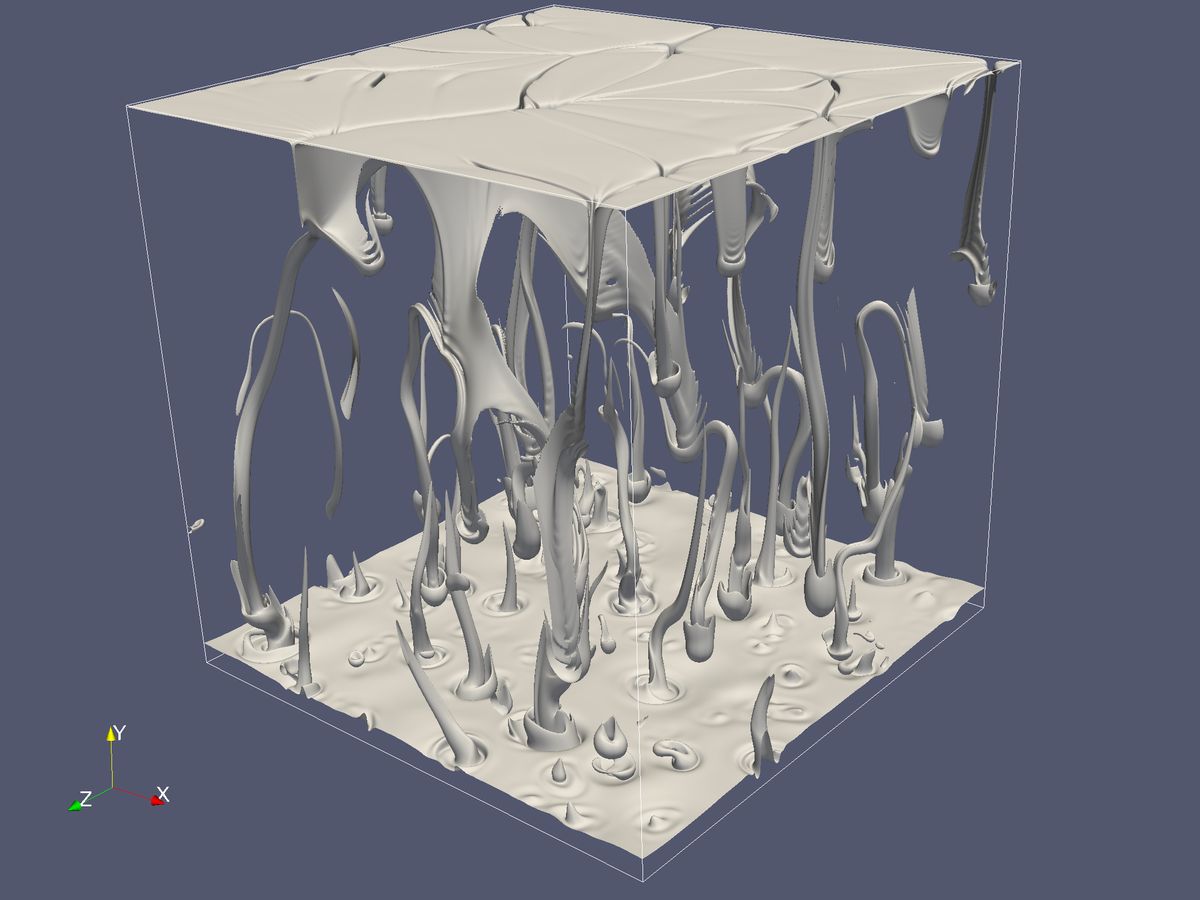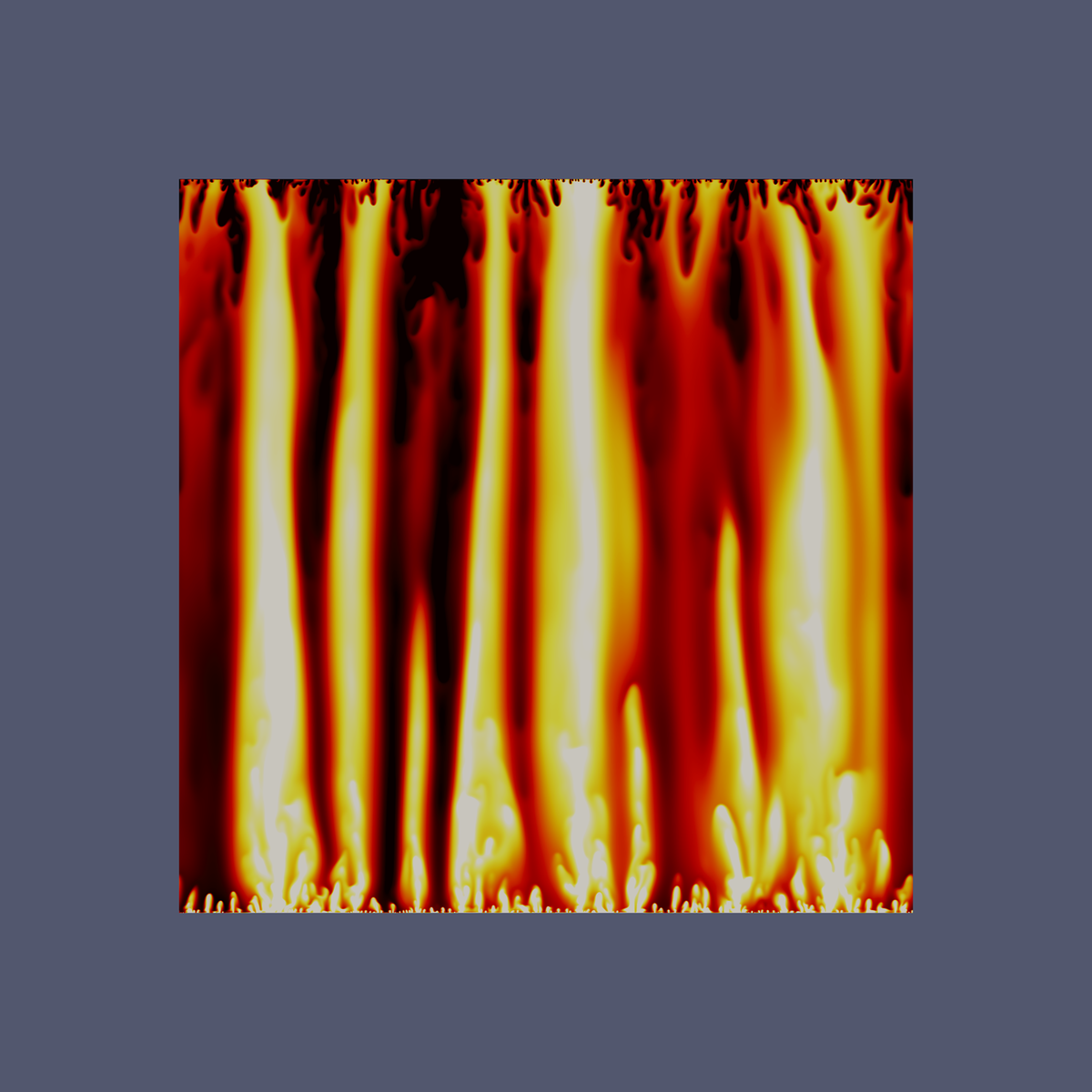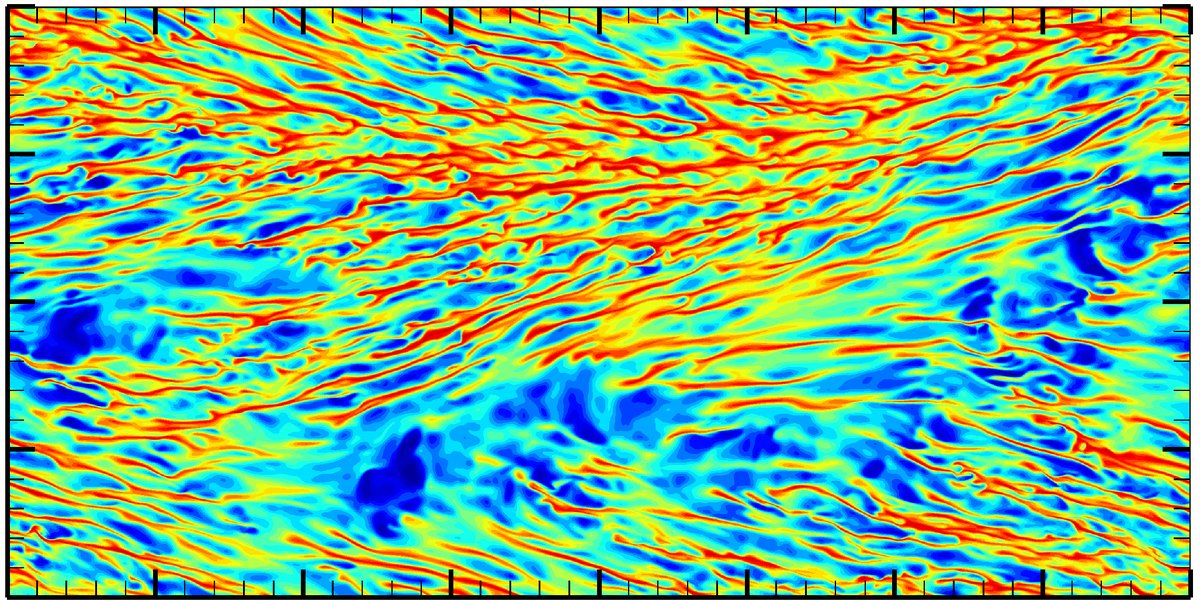The colloquium will be held in hybrid format. This means that both in-person and virtual (online) attendance is foreseen. In-person attendance of the speakers is encouraged.
Speakers that are unable to attend in person, can send a pre-recorded video of their talk: This video will then be shown to in-person attendees during the conference.
To make in-person participation possible, the organizing committee is carefully monitoring the evolution of the COVID-19 pandemic and will set up all necessary measures to guarantee a safe and fruitful meeting.
A turbulent flow in which density gradients exist is bound to be subject to vertical buoyancy force, which modifies the physics of mass, momentum and energy transport. Density stratification can be either of stable type (i.e. light fluid lying on top of heavy fluid) or of unstable type (heavy fluid lying on top of light fluid) and is often affected by the presence of boundaries, thus yielding wall-bounded turbulent stratified flows. Examples of such flows can be found in industrial and geophysical/environmental applications and include heat exchangers, chemical/nuclear reactors and atmospheric/oceanic boundary layers. Experimental, computational, and theoretical methodologies have provided plenty of data and insights into the complex intertwined phenomena typical of stably and unstably stratified turbulence, yet the field remains rich in future challenges.
One of such challenges is the need for accurate numerical and experimental results at large Reynolds and Rayleigh number. Although DNS (Direct Numerical Simulation) has produced a huge amount of information on stratified turbulence, the Reynolds/Rayleigh number in most available studies is too low to satisfactorily address full-scale environmental and industrial phenomena. In fact, it is far from clear that information obtained from low-Reynolds/Rayleigh-number simulations can be confidently extrapolated to the scales relevant of real-world phenomena, especially in the oceanic and atmospheric context. In this respect, the capability of carrying out large exa-scale DNS on next-generation supercomputers will allow for systematic investigation of a broader range of the governing parameters. These large-scale databases will certainly also help LES (Large Eddy Simulation) to design high-fidelity subgrid-scale models, as well as RANS (Reynolds-Averaged Navies Stokes) to develop reliably buoyancy-sensitive turbulence closures.
A further important issue is encountered in environmental and industrial applications, in which vertical length scales are large (for example, the atmospheric/oceanic boundary layer) and fluid temperature gradients are large (for example,nuclear reactors). In such instances, the classical Oberbeck-Boussinesq (OB) linearization is questionable. Although the OB model has been of utmost use in gaining fundamental insight into stratified flows, it can no longer be maintained whenever temperature gradients are large and/or when the focus is on phenomena occurring at large vertical scales. As a consequence, suitable modeling approaches including non-Oberbeck-Boussinesq effects should be adopted/developed to accurately capture the physics of stratified turbulence at large Reynolds/Rayleigh numbers.
The aim of the proposed Euromech colloquium is to gather together a critical mass of world-wide experts in the study of turbulent stratified flows, to highlight the main physical, experimental and computational challenges standing before us, and devise avenues for effective physical and technological advancement.
Main Topics:
- Unbounded stably-stratified turbulence
- Wall-bounded stably stratified turbulence
- Internal gravity waves
- Unstably stratified turbulence
- Rayleigh-Benard Turbulence
- Non Oberbeck-Boussinesq effects in stratified turbulence
- Double diffusive convection




